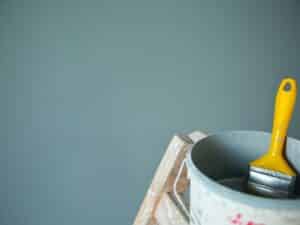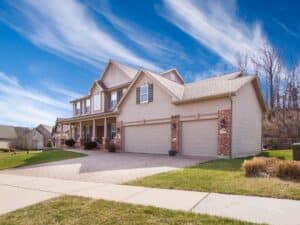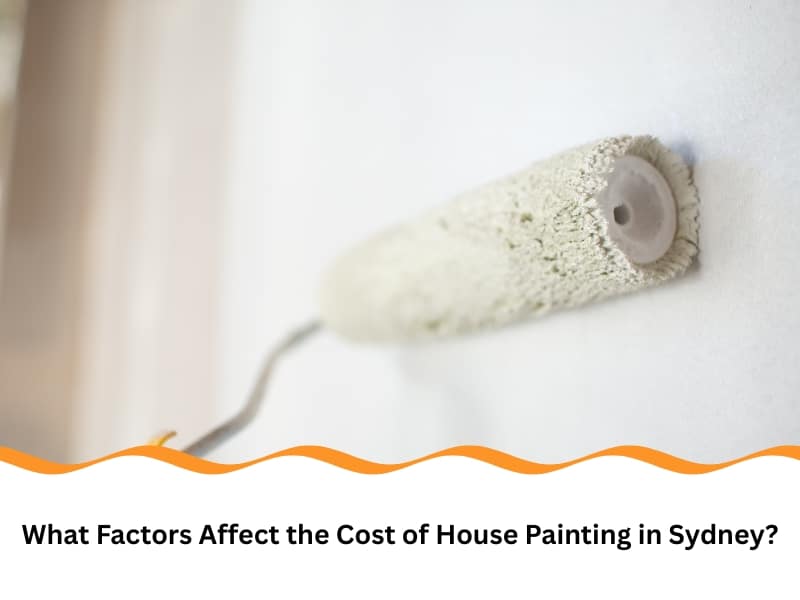House painting is one of the easiest ways to refresh your space, whether sprucing up the inside or updating the exterior. However, several factors come into play regarding the cost of house painting. In Sydney, where property types and weather conditions vary significantly, it’s essential to consider all the influencing factors before you start your painting project. This article will explore the factors that can affect house painting costs in Sydney, so you can make an informed decision when planning your project.
Why does the size of your home impact painting costs?
The size of your home is one of the most significant factors in determining the cost of painting a house. Larger homes require more time, materials, and effort, thus increasing the overall cost.
Here’s how size affects painting costs:
- Square footage: The more space, the more paint is needed. Larger areas, such as multiple bedrooms, living rooms, or large hallways, require additional coats of paint.
- Exterior surface area: Larger homes with multiple floors or extensive outdoor areas, like patios or fences, will increase the cost due to the extra surface area.
- Height: Taller buildings or homes with high ceilings require scaffolding or ladders, which adds to the overall cost.
- Room complexity: Open-plan homes may be easier and quicker to paint, but homes with complex room layouts or lots of intricate trim work can take longer and cost more.
The bigger your home, the higher the cost will likely be due to the increased labour, materials, and time required.
How do different surface types influence painting costs?
Different surfaces require different types of preparation and paint, which can directly affect the cost of your residential painting project.
Consider the following factors:
Surface Type | Preparation Needed | Impact on Costs |
Wooden surfaces | Sanding and priming | Increases labour costs |
Brick/Masonry | Special primer and paint, rough texture | Higher material and labour costs |
Plaster/Drywall | Repairing cracks and holes | Adds to preparation costs |
Metal surfaces | Anti-rust treatment | Increases material costs |
Concrete floors | Specialised paint and prep (garages/basements) | Raises preparation and material costs |
The surface type will influence material costs and the time needed to prepare and paint the area, ultimately impacting the total cost.
What types of paint affect the total house painting price?
The choice of paint is another important factor influencing the cost of house painting in Sydney. The quality, finish, and type of paint you select can significantly alter your budget.
Here’s what to consider:
- Standard paint: Budget-friendly paints are less expensive but may require more coats to achieve a high-quality finish.
- Premium paint: Higher-quality paints often last longer and cover better, but they come at a higher price.
- Eco-friendly paints: Paints with low volatile organic compounds (VOC) or VOC-free are more environmentally friendly but expensive due to their specialised ingredients.
- Specialty paints: For certain areas, such as bathrooms or kitchens, you may need moisture-resistant or mould-resistant paints, which can be more costly.
- Finish types: Glossy finishes tend to cost more than matte finishes due to the quality of the materials and the additional effort needed for application.

Choosing the right paint is essential for aesthetics and longevity. However, premium and eco-friendly options often have a higher upfront cost.
Which areas of your home will cost more to paint?
Certain areas of your home are more expensive to paint due to accessibility, complexity, and the required preparation.
Key areas that can influence costs include:
- Exteriors: Painting a home’s exterior often requires ladders or scaffolding, especially for multi-storey houses. This can significantly increase the overall cost.
- Trim and doors: Intricate trim around doors, windows, and baseboards requires more time and precision, raising the cost per square metre.
- Ceilings: High ceilings, particularly in entryways or living rooms, add to costs due to extra equipment and time.
- Staircases: Painting stairs, especially with detailed railings, needs extra prep and accuracy.
- Feature walls: Accent walls with texture or patterns demand more effort and time.
These areas require more attention and preparation, meaning they will cost more to paint than simpler surfaces.
How do weather conditions impact house painting costs?
In Sydney, the weather can significantly influence your painting project. Paint is sensitive to temperature and humidity, affecting how well it adheres to surfaces.
- Summer: Painting in the heat can cause paint to dry too quickly, leading to uneven application. However, heat-resistant paints are often used for exterior surfaces, especially in hot areas.

- Winter: Cooler temperatures and higher humidity can extend drying times, making it important to take precautions to prevent paint bubbles in humid conditions. This may lead to additional labour costs as workers must wait for surfaces to dry between coats.
- Spring and autumn: These seasons tend to offer the best conditions for painting, with moderate temperatures and lower humidity. They are ideal for both interior and exterior painting projects.
- Rain: Rain can ruin a fresh coat of paint, especially if it’s not allowed to dry completely. This could lead to additional time and costs for touch-ups.
Choosing the right season for your painting project can save you money and ensure the paint job lasts longer.
Which other factors can influence house painting costs?
Several other factors can influence the cost of house painting.
These include:
Factor Scenario Impact Access to Property Difficult access, scaffolding needed Hard to reach = higher cost Labour Costs More painters, complex jobs require more time More painters = more cost Location High demand areas, heritage zones High-demand = higher cost Cleaning and Finishing Cleanup, multiple coats of paint Extra steps = extra cost
While often overlooked, these factors play a crucial role in determining the overall cost of your painting project.
Is DIY painting a viable option to reduce costs?
While DIY painting might seem like a way to save money, it’s essential to consider the pros and cons.
- Time: DIY painting can take much longer than hiring professionals, especially if you’re inexperienced.
- Quality: Without proper training and experience, you may not achieve the same quality of finish as a professional painter.
- Equipment costs: If you don’t already have the necessary tools, you’ll need to invest in brushes, rollers, drop sheets, and ladders, which can add to the cost.
- Mistakes: DIY painting can lead to costly mistakes, such as paint drips or uneven application, which may require expensive touch-ups.
While DIY painting can save you some money initially, it might not be worth the risk if you lack the experience or time. Hiring the best painter in Sydney for quality results is often the best option for a professional finish.
Conclusion
To get a professional and long-lasting paint job, consider hiring a qualified painting company that understands the factors influencing house painting costs in Sydney. A professional service ensures quality, efficiency, and excellent results.
Curious about how a fresh coat of paint can transform your space? Reach out to Sydney Paintmasters for your painting needs.

